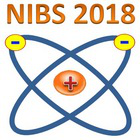Speaker
Dr
Seth Veitzer
(Tech-X Corporation)
Description
Conventional global models for plasma discharge chambers solve volume averaged continuity equations, electron and total energy equations supplemented by quasineutrality condition in order to obtain plasma components number densities and electron and heavy species temperatures. These models are limited to single chamber designs. Their main advantage is a rapid evaluation of parameter space that is used to select the most important plasma components and chemical reactions, and obtain basic plasma scaling parameters.
We present a new global model for simulations of multi-chamber negative hydrogen ion sources. This is an extension of our previous verified global model for a single-chamber design. Our new model consists of separate global models for each chamber with interface boundary conditions that are solved simultaneously to get macroscopic parameters (number densities and temperatures) of all species in each chamber. The model includes electrons, hydrogen molecules with all vibrational states ($H_2(v)$), hydrogen atoms in the first 3 electronic states ($H(n)$), and ground state ions ($H^+$ , $H_2^+$ , $H_3^+$ and $H^−$) and a comprehensive set of surface and volume chemical reactions.
In addition, the global model includes boundary conditions for multi-aperture extraction system. We validate our model by comparing simulation results for a plasma composition and species temperatures in the negative hydrogen ion source developed at IPP Garching.
This work was performed under the auspices of the Department of Energy, Office of Basic Energy Sciences Award #DE-SC0009585.
Primary author
Dr
Sergey Averkin
(Tech-X Corporation)
Co-author
Dr
Seth Veitzer
(Tech-X Corporation)

